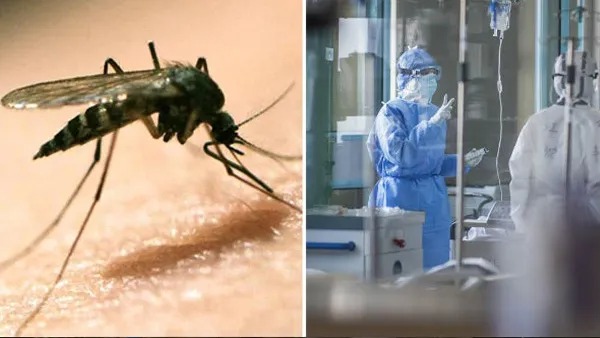
Chandipura virus: After recovering from an epidemic like Corona, now a new epidemic is coming in Gujarat. Currently, the health department is in alert mode regarding Chandipura virus.
According to the National Institute of Virology, 15 children have died due to Chandipura virus in the country. So far 29 cases of Chandipura virus have been reported across the country.
Most of these cases have been detected in Gujarat (26), followed by Rajasthan (2) and Madhya Pradesh (1). It is also known as CHPV virus.
According to a health department official, as of July 17, 15 people have died, of which one has been confirmed to have died of Chandipura virus, while another is suspected to have died. However, the symptoms are similar in all cases so it is believed that all the cases are the same.
According to health department officials and doctors at government hospitals, cases will rise in the coming days as the virus spreads to more districts and even cities like Ahmedabad, where a child died at one of the civil hospitals on Wednesday.
What is Chandipura virus?
- Chandipura virus was first reported in Maharashtra in 1965. Since this virus was identified in Chandipur, Nagpur, it has been named Chandipura virus.
- After this, Chandipura virus was found in Andhra Pradesh, Maharashtra and Gujarat from 2004 to 2006 and 2019. Chandipura virus is an RNA virus, which is usually spread by female phlebotomine flies. Aedes found in mosquitoes is responsible for its spread.
- Due to this, the risk of children getting infected with this virus increases. Mostly children below 15 years of age are infected with Chandipura virus. Till now, the highest mortality rate is seen in children of this age.
Symptoms of Chandipura Virus
- Symptoms Chandipura virus causes fever with flu-like symptoms. It causes acute encephalitis. This pathogen is a member of the Vesiculovirus genus of the Rhabdoviridae family.
- It is spread by vectors such as mosquito mites and sand flies. Its main symptoms are fever, diarrhea-vomiting, headache, cramps, meningitis.
- According to research, when Chandipura virus spreads in the body, other symptoms like difficulty in breathing, bleeding tendency or anemia are also observed.
- According to studies, the infection followed by encephalitis often progresses rapidly, leading to death within 24-48 hours of hospitalisation.
How does Chandipura virus spread?
- Chandipura virus is spread by vectors such as mosquitoes, ticks and sand flies. There are several species of sandflies such as the Phlebotomine sandfly and Phlebotomus papatsii, some mosquito species such as Aedes aegypti, which spread Chandipura virus. Some species of mosquitoes such as Aedes aegypti also spread dengue.
Chandipura virus treatment
- No anti-viral drug has yet been developed to treat Chandipura.
- Its virus can only be treated symptomatically, as there is no specific antiretroviral therapy or vaccine available for treatment.
- Controlling brain swelling is the best treatment to prevent mortality.
How many cases of Chandipura virus in which state?
- At present, there are 29 cases of Chandipura virus in the country. Out of 29 cases, 26 are in Gujarat, two in Rajasthan and one in Madhya Pradesh. Out of these 15 deaths, 13 are from Gujarat. While one each from Madhya Pradesh and Rajasthan. In Gujarat, cases have been reported from Sabarkantha, Aravalli, Mehsana, Rajkot, Ahmedabad city, Morbi, Panchmahal and other places.
Preventive measures against Chandipura virus
- The first step to prevent Chandipura virus is to avoid sand flies. Insecticides can be used for this.
- To avoid flies and mosquitoes, wear full clothes and do not sleep without a mosquito net.
- According to the health department, Chandipura virus is mainly found in the crevices of houses in Kutch. Hence, surveillance, dusting and spraying are the measures to prevent the epidemic.
- So far, 51,724 individuals in 10,181 households in the affected areas across Gujarat have been monitored and provided preventive measures with the aim of sensitizing them.
 look news india
look news india
